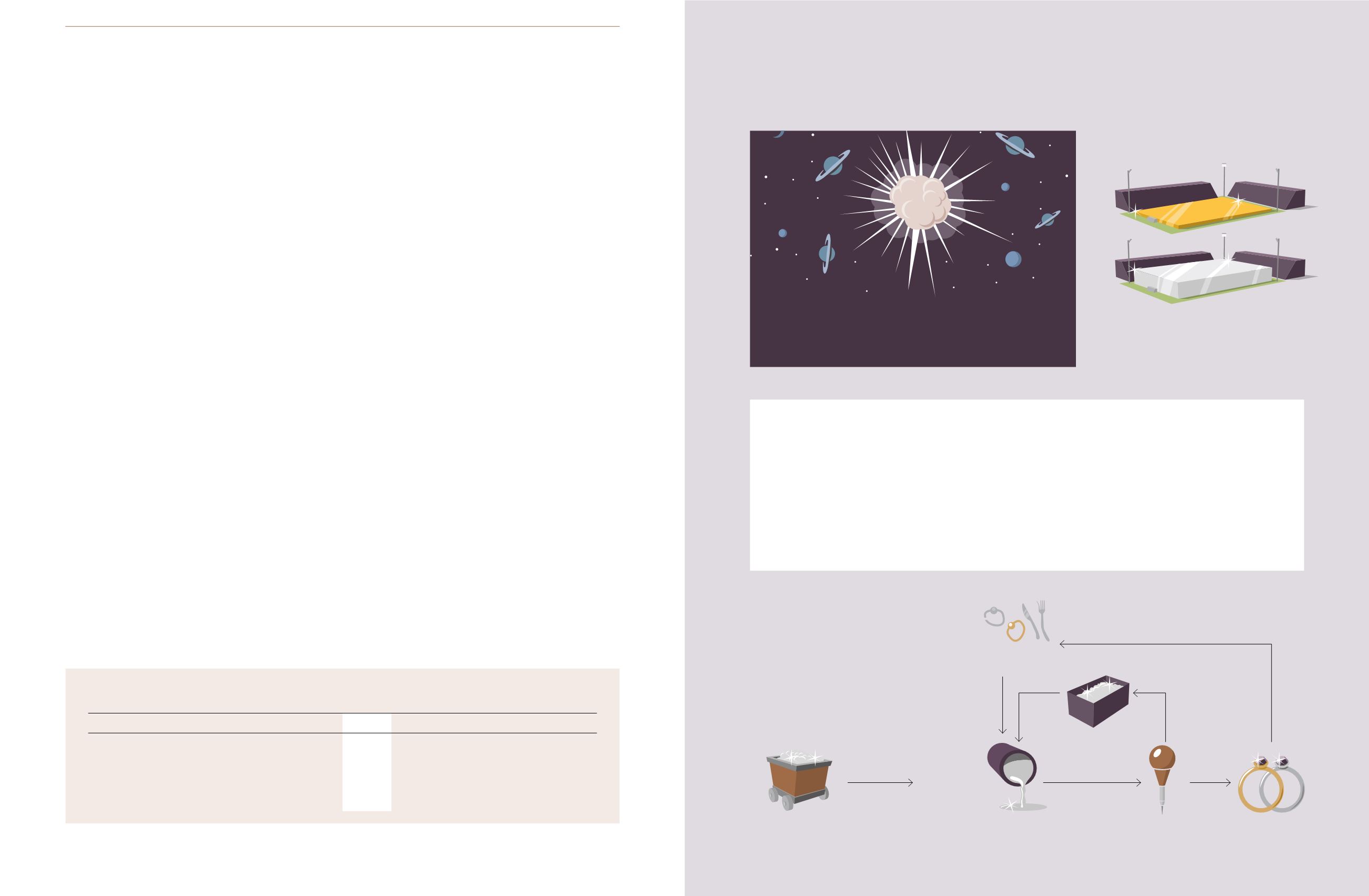

PANDORA ETHICS REPORT 2016
20
21
LOGI STICS
PANDORA jewellery is sold in more than 100 countries
around the world; hence PANDORA requires logistics
services from a variety of different providers moving our
goods through different types of transport – rail, sea, road
and air. In 2014, CO₂ emissions from the transport of our
jewellery was identified as a focus area, and we have been
in close dialogue with our transport providers on how to
gather reliable data and how to minimise emissions in the
future. In 2016, the estimated transport emissions for over
90% of our transport activities amounted to 8,700 tonnes
of CO₂; up from 5,400 in 2015. We consider this rise in
transport emissions to be a result of our growth and
especially the increased number of concept stores, which is
without a doubt the store type with the highest use of point
of sales materials: such as fixtures & furniture, bags & boxes.
It is encouraging that dialogue with our transport providers,
all global leaders in their industries, clearly shows a
dedication towards lowering their emissions. In 2017, we
will continue the dialogue but still concentrate our focus on
a place where our sphere of influence is stronger: our
supply chain and our crafting.
Bus services
We offer our PPT colleagues safe bus transportation to and
from work, which, in 2016, totalled more than 40,000 round
trips and more than 1,6 million kilometres. By year end,
more than 9,700 people regularly made use of this service.
Bus companies are subject to regular controls by government
agencies and our in-house SHE teams. With 50 passengers per
bus and buses in good condition, this option is highly energy
efficient compared to other feasible means of transportation.
The bus transportation set-up has been replicated at our
new facility in Lamphun.
STORES
PANDORA jewellery is presently sold in about 2,100
PANDORA concept stores around the world, of which more
than around 600 are owned and operated by PANDORA.
The remaining stores are operated by our retail partners.
Our current store concept “Evolution” was introduced in
2014 and it is environmentally friendly in several ways. The
concept is designed to be extra durable and it is possible to
replace smaller parts over time – stretching the lifetime of
the fixtures and furniture. As part of the development of
Evolution, energy consumption was considerably reduced
by relying on LED lights rather than conventional light bulbs.
According to our in-house estimates, this change and the
ongoing optimisation of LED light bulbs has enabled us to
cut up to 50% off our electricity consumption in an average
PANDORA concept store. The reduction is a result of more
efficient lights, which also create less heat – reducing the
need for air conditioning. In 2016, approximately 50% of
all concept stores had switched to Evolution.
Finally, all paper bags are certified by the Forest Stewardship
Council (FSC). Moreover, we continuously seek to expand
our range of certified paper-based and wood-based
materials according to international sustainability standards.
TOTAL AMOUNT OF GOLD
AND S I LVER GLOBALLY
Gold and silver experts Metalsfocus estimates
that through time 180,000 tonnes of gold and
1,900,000 tonnes of silver have been mined from
Earth. Spread out on a football field, it would look
something like the above.
Gold and silver are fantastic raw materials, originating
from exploding stars at the beginning of time.
GOLD & S I LVER ORIGIN
GOLD / SILVER
SCRAP
CRAFTING
SCRAP
WEARING
CRAFTING
REFINING
MINING
of the grains we use
at our Thai crafting
facilities comes from
recycling
RECYCLING
91% SILVER
86% GOLD
GOLD AND
S I LVER FACTS
Originating from a goldsmith’s work
bench, our path to success has been
paved with gold and silver; the
foundation of the vast majority of our
jewellery today.
Besides their alluring look and fantastic
crafting potential, gold and silver also
have great environmental benefits.
Being high-value precious metals,
obsolete gold and silver objects are not
thrown away, but are re-melted and re-
refined into pure quality gold and silver,
which can be used time and time again
without their quality being diminished.
Using recycled precious metals
significantly reduces the environmental
impact compared to the impact of
mined metals.
Gold and silver are both finite
materials, but the exact amount of
what we have on Earth can only be
based on assumptions.
of the grains we use
at our Thai crafting
facilities comes from
responsible mining
MINING
9% SILVER
14% GOLD
PLANET
– KEY PERFORMANCE INDICATORS
2016
2015
2014
2013
Water consumption at crafting facilities, m
3
584,108
483,000
379,000
292,000
Recycled crafting waste, %
86
83
81
57
Energy consumption at crafting facilities, MWh
35,907
29,472
23,243
19,170
Global transport emissions, tonnes CO₂
8,665
5,435
4,324
-
Recycled silver/gold, %
91/86
83/96
99/90
-
















